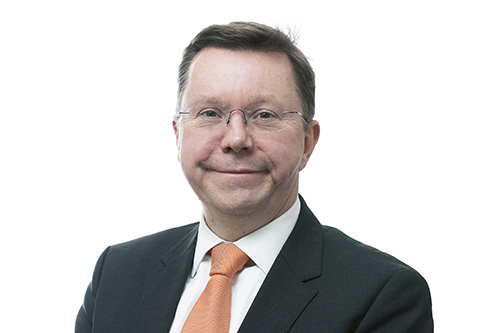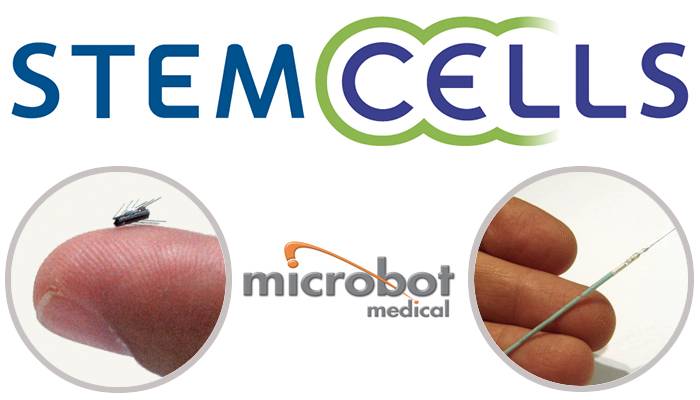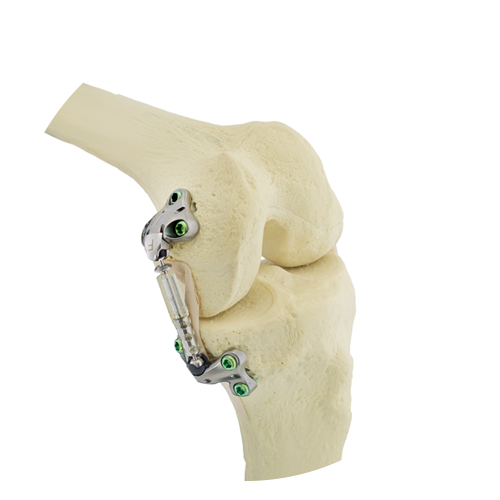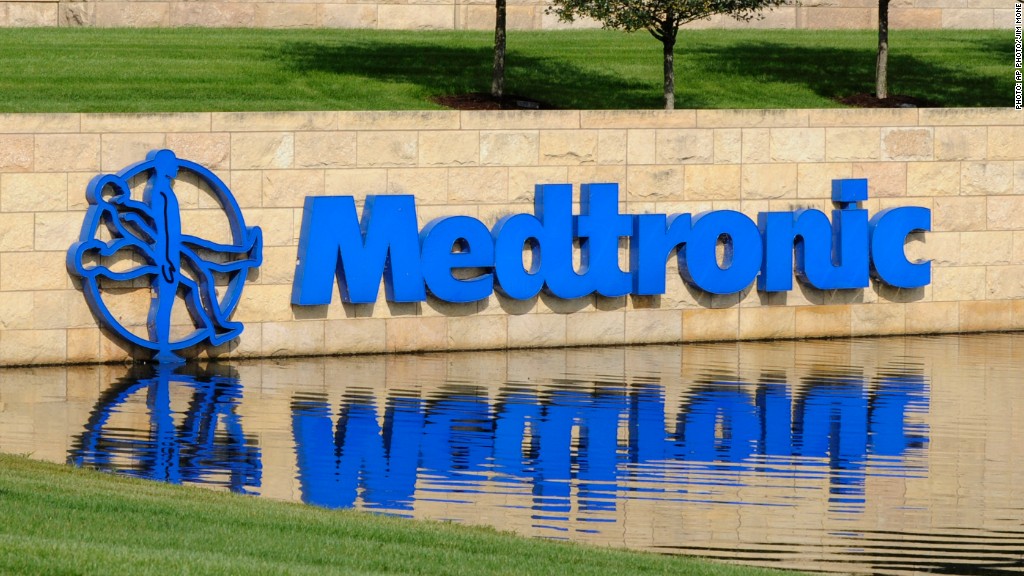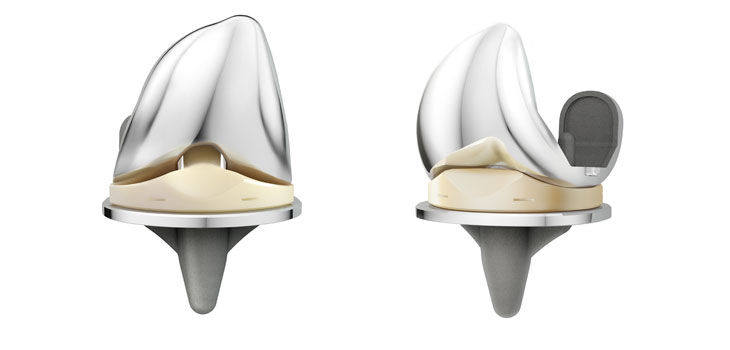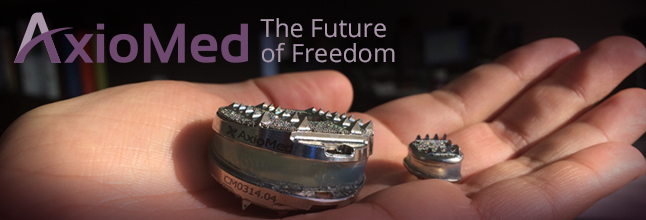DUBLIN – November 22, 2016 – Medtronic plc (NYSE: MDT) today announced financial results for its second quarter of fiscal year 2017, which ended October 28, 2016.
The company reported second quarter worldwide revenue of $7.345 billion, an increase of 4 percent, or 3 percent on a constant currency basis. Foreign currency had a positive $50 million impact on revenue. Second quarter GAAP net income and diluted earnings per share (EPS) were $1.115 billion and $0.80, increases of 114 percent and 122 percent, respectively. As detailed in the financial schedules included through the link at the end of this release, second quarter non-GAAP net income and diluted EPS were $1.561 billion and $1.12, representing increases of 6 percent and 9 percent, respectively. After adjusting for the negative 6 cent impact from foreign currency, non-GAAP diluted EPS increased 15 percent.
“Q2 revenue was disappointing and did not meet our expectations. We faced issues that affected our growth, including slower than expected revenue as we await new product introductions, particularly in CVG and Diabetes,” said Omar Ishrak, Medtronic chairman and chief executive officer. “Despite this revenue shortfall, we produced a strong improvement in operating margins and double digit constant currency earnings per share growth.”
The second quarter GAAP operating margin was 18.9 percent, a 50 basis point improvement. As detailed in the financial schedules included through the link at the end of this release, the second quarter non-GAAP operating margin was 28.9 percent on a constant currency basis, a 150 basis point improvement.
U.S. revenue of $4.152 billion represented 57 percent of company revenue and increased 1 percent. Non-U.S. developed market revenue of $2.209 billion represented 30 percent of company revenue and increased 8 percent, or 5 percent on a constant currency basis. Emerging market revenue of $984 million represented 13 percent of company revenue and increased 8 percent, or 10 percent on a constant currency basis.
Cardiac and Vascular Group
The Cardiac and Vascular Group (CVG) includes the Cardiac Rhythm & Heart Failure (CRHF), Coronary & Structural Heart (CSH), and Aortic & Peripheral Vascular (APV) divisions. CVG worldwide revenue of $2.584 billion increased 4 percent, or 3 percent on a constant currency basis, driven by CRHF growth from the recent acquisition of HeartWare and strong growth in other CRHF businesses, as well as growth in APV. CSH revenue growth was flat as strong growth in Structural Heart partially offset declines in Coronary.
- CRHF revenue of $1.400 billion increased 6 percent, or 5 percent on a constant currency basis, driven by growth from the company’s recent acquisition of HeartWare, high-twenties growth in AF Solutions on a constant currency basis, mid-teens growth in Diagnostics on a constant currency basis, partially offset by declines in core cardiac rhythm implantables, which declined in-line with the global market.
- CSH revenue of $753 million was flat on both a reported and constant currency basis. Structural Heart was driven by high-teens growth on a constant currency basis in transcatheter aortic heart valves as a result of strong customer adoption of the CoreValve®Evolut® Coronary declined in the mid-single digits on a constant currency basis, driven by double-digit declines in drug-eluting stents in the US and Japan, as the company awaits approval of Resolute Onyx(TM). This was partially offset by mid-single digit growth on a constant currency basis in drug-eluting stents in Western Europe resulting from continued strong sales of the Resolute Onyx(TM) platform.
- APV revenue of $431 million increased 5 percent, or 4 percent on a constant currency basis, with low-single digit growth on a constant currency basis in the Aortic business, driven by the success of the Heli-FX®EndoAnchor® The Peripheral Vascular business grew in the mid-single digits on a constant currency basis, with mid-twenties growth on a constant currency basis in drug-coated balloons, driven by the clinically differentiated IN.PACT® Admiral® DCB, which holds the leading market position in the U.S. and globally.
Minimally Invasive Therapies Group
The Minimally Invasive Therapies Group (MITG) includes the Surgical Solutions and the Patient Monitoring & Recovery (PMR) divisions. MITG worldwide revenue of $2.473 billion increased 5 percent, or 4 percent on a constant currency basis, led by MITG growth drivers, primarily Open-to-MIS, Emerging Markets, and Renal Care, as well as contributions from recent acquisitions and strength in Ventilation.
- Surgical Solutions revenue of $1.361 billion increased 5 percent, or 4 percent on a constant currency basis, driven primarily by its Open-to-MIS growth driver, including strong product sales from Valleylab(TM) FT10 energy platform and continued performance in endo stapling specialty reloads. In addition, there was solid contribution from Emerging Markets with overachievement in Latin America and China. The division also benefitted from the recent acquisition of Smith & Nephew’s gynecology business. At the same time, Surgical Solutions growth was offset in the U.S. by competitive pressures stemming from reprocessing of advanced energy instruments, and in the Middle East from the timing of tenders.
- PMR revenue of $1.112 billion increased 4 percent, or 3 percent on a constant currency basis, driven by mid-single digit growth in the Respiratory & Patient Monitoring business as a result of strong sales of the Puritan Bennett(TM) 980 ventilator. The Renal Care Solutions business benefitted from the recent acquisition of Bellco.
Restorative Therapies Group
The Restorative Therapies Group (RTG) includes the Spine, Brain Therapies, Specialty Therapies, and Pain Therapies divisions. RTG worldwide revenue of $1.826 billion increased 4 percent, or 3 percent on a constant currency basis. Group results were driven by mid-single digit growth in Brain Therapies and Specialty Therapies and continued improvement in Spine, offsetting declines in Pain Therapies, all on a constant currency basis.
- Spine revenue of $663 million increased 2 percent, or 1 percent on a constant currency basis, the division’s strongest growth in 7 quarters. The Core Spine business grew in the low-single digits in the U.S., as the focus on “Speed-to-Scale” new product launches is driving improved results. BMP grew in the low-single digits on a constant currency basis, with high-single digit growth in the U.S. partially offset by the loss of InductOs(TM) sales in Europe as a result of a shipping hold.
- Brain Therapies revenue of $506 million increased 7 percent, or 6 percent on a constant currency basis. Neurosurgery grew in the high-single digits on a constant currency basis, driven in part by strong imaging and navigation capital equipment sales. Neurovascular grew in the mid-single digits on a constant currency basis, slower growth than in prior quarters due to a recently announced voluntary recall of certain product lines. Brain Modulation grew in the low-single digits on a constant currency basis on the strength of the company’s MR conditional Activa DBS portfolio.
- Specialty Therapies revenue of $369 million increased 6 percent on both a reported and constant currency basis. All three businesses contributed to growth, with Advanced Energy growing in the low-double digits, Pelvic Health growing in the high-single digits, and ENT growing in the low-single digits, all on a constant currency basis.
- Pain Therapies revenue of $288 million decreased 2 percent on both a reported and constant currency basis. After adjusting for the divestiture of the division’s drug business, which occurred in the third quarter of fiscal year 2016, Pain Therapies revenue increased 1 percent on a constant currency basis. This was a result of mid-single digit declines on a constant currency basis in Spinal Cord Stimulation, as the business faced competitive pressures, partially offset by the Interventional business, which grew in the high-single digits, and Drug Pumps, which grew in the mid-single digits, both on a constant currency basis.
Diabetes Group
The Diabetes Group includes the Intensive Insulin Management (IIM), Non-Intensive Diabetes Therapies (NDT), and Diabetes Service & Solutions (DSS) divisions. Diabetes Group worldwide revenue of $462 million increased 3 percent on both a reported and constant currency basis. Growth was slower this quarter than in previous quarters due to the dynamics associated with the U.S. FDA approval of the MiniMed® 630G System and earlier-than-expected U.S. FDA approval of the MiniMed® 670G System, which the company expects to become commercially available in the Spring of 2017.
- IIM grew in the mid-single digits on a constant currency basis, including mid-teens growth on a constant currency basis in International markets as a result of continued strong sales in Europe and Asia Pacific of the MiniMed®640G System. This was offset by low-single digit declines in the U.S. driven by the timing between approval and shipments for both the MiniMed® 630G System and MiniMed® 670G System. In addition, the company is deferring a portion of its MiniMed® 630G System sales due to its Priority Access Program.
- NDT grew in the high-thirties on a constant currency basis, led by strong sales of the iPro®2 Professional Continuous Glucose Monitor (CGM) technology with Pattern Snapshot to primary care physicians.
- DSS grew in the low-single digits on a constant currency basis as a result of growth in consumables, Diabeter clinics in Europe, and continued strong growth of the MiniMed®Connect, offset by the impact of buying patterns due to the previously mentioned insulin pump approvals.
Outlook
The company today updated its fiscal year 2017 revenue and free cash flow outlook and EPS guidance. Consistent with the company’s long-term, mid-single digit constant currency revenue growth expectation, the company now expects fiscal year 2017 revenue growth to be within the mid-single digit range on a constant currency, constant weeks basis, as opposed to the upper half of the mid-single digit range signaled previously. The company expects revenue growth for the second half of fiscal year 2017 to also be in the mid-single range on a constant currency basis. While the impact from foreign currency is fluid, if current exchange rates remain similar for the remainder of the fiscal year, the company’s full year revenue would be negatively affected by approximately $20 million to $60 million, including an approximate $10 million to $30 million negative impact in the third fiscal quarter.
In addition, the company updated its diluted non-GAAP EPS guidance for fiscal year 2017. The company continues to expect fiscal year 2017 diluted non-GAAP EPS growth to be in the double digits on a constant currency, constant week basis, which is consistent with the company’s long-term, double digit constant currency EPS growth expectation. The company expects non-GAAP diluted EPS growth for the second half of fiscal year 2017 to be in the 8 percent to 10 percent range on a constant currency basis. While the impact from foreign currency is fluid, taking into account the estimated 8 to 10 cent impact from the extra week in the first quarter last fiscal year, as well as an estimated negative impact from foreign currency to fiscal year 2017 EPS of 20 to 22 cents, assuming current exchange rates remain similar for the rest of the year, this growth guidance implies fiscal year 2017 non-GAAP diluted EPS in the range of $4.55 to $4.60.
Starting this quarter, the company is modifying its free cash flow outlook methodology to more closely align the company’s free cash flow projection with the results it reports each quarter. The company previously provided an adjusted free cash flow outlook, which would exclude cash payments related to non-GAAP items that might occur during the year, and will now provide an actual free cash flow outlook, which includes these items in projected free cash flow. The company expects free cash flow for fiscal year 2017 to be in the range of $5 to $6 billion.
“While some of the challenges that affected revenue in Q2 could persist in the near term, we remain confident in our ability to deliver mid-single digit constant currency revenue growth and double-digit constant currency EPS growth, not only in our current fiscal year, but on a sustained basis into the future,” said Ishrak. “As always, we remain committed to applying our medical technology and solutions to help address the universal healthcare needs of improving clinical outcomes, expanding access to care, and optimizing cost and efficiency, which combined represent a perpetual source of opportunity in healthcare.”
Webcast Information
Medtronic will host a webcast today, November 22, at 8:00 a.m. EST (7:00 a.m. CST) to provide information about its businesses for the public, investors, analysts, and news media. This quarterly webcast can be accessed by clicking on the Investor Events link at investorrelations.medtronic.com and this earnings release will be archived at newsroom.medtronic.com. Medtronic will be live tweeting during the webcast on our Newsroom Twitter account, @Medtronic. Within 24 hours of the webcast, a replay of the webcast and transcript of the company’s prepared remarks will be available by clicking on the Investor Events link at investorrelations.medtronic.com.
Financial Schedules
To view the second quarter financial schedules and non-GAAP reconciliations, click here. To view the second quarter earnings presentation, click here. Both of these documents can also be accessed by visiting newsroom.medtronic.com.
About Medtronic
Medtronic plc (www.medtronic.com), headquartered in Dublin, Ireland, is among the world’s largest medical technology, services and solutions companies – alleviating pain, restoring health and extending life for millions of people around the world. Medtronic employs more than 88,000 people worldwide, serving physicians, hospitals and patients in approximately 160 countries. The company is focused on collaborating with stakeholders around the world to take healthcare Further, Together.
FORWARD LOOKING STATEMENTS
This press release contains forward-looking statements related to product and service growth drivers, market position and opportunities, the transforming healthcare environment, strategies for and sustainability of growth, benefits from collaborations and acquisitions, availability of and plans for cash, product launches, and Medtronic’s future results of operations, which are subject to risks and uncertainties, such as competitive factors, difficulties and delays inherent in the development, manufacturing, marketing and sale of medical products, challenges with respect to third-party collaborations and integration of acquired businesses, effectiveness of growth and restructuring strategies, challenges relating to our worldwide operations, challenges or unforeseen risks in implementing our growth strategies, government regulation, fluctuations in foreign currency exchange rates, future revenue and earnings growth, and general economic conditions and other risks and uncertainties described in Medtronic’s periodic reports and other filings with the U.S. Securities and Exchange Commission (the “SEC”). Anticipated results only reflect information available to Medtronic at this time and may differ from actual results. Medtronic does not undertake to update its forward-looking statements or any of the information contained in this press release. Certain information in this press release includes calculations or figures that have been prepared internally and have not been reviewed or audited by our independent registered public accounting firm, including but not limited to, certain information in the financial schedules accompanying this press release. Use of different methods for preparing, calculating or presenting information may lead to differences and such differences may be material.
NON-GAAP FINANCIAL MEASURES
This press release contains financial measures and guidance, including free cash flow figures (defined as operating cash flows less property, plant and equipment additions), revenue and growth rates on a constant currency basis, net income, and diluted EPS, all of which are considered “non-GAAP” financial measures under applicable SEC rules and regulations. Unless otherwise noted, all revenue amounts given in this press release are stated in accordance with U.S. generally accepted accounting principles (GAAP). References to quarterly figures increasing or decreasing are in comparison to the second quarter of fiscal year 2016.
Medtronic management believes that in order to properly understand its short-term and long-term financial trends, including period over period comparisons of the company’s operations, investors may find it useful to exclude the effect of certain charges or gains that contribute to or reduce earnings but that result from transactions or events that management believes may or may not recur with similar materiality or impact to operations in future periods (Non-GAAP Adjustments). Medtronic generally uses non-GAAP financial measures to facilitate management’s review of the operational performance of the company and as a basis for strategic planning. Non-GAAP financial measures should be considered supplemental to and not a substitute for financial information prepared in accordance with GAAP, and investors are cautioned that Medtronic may calculate non-GAAP financial measures in a way that is different from other companies. Management strongly encourages investors to review the company’s consolidated financial statements and publicly filed reports in their entirety. Reconciliations of the non-GAAP financial measures to the most directly comparable GAAP financial measures are included in the financial schedules accompanying this press release.
Medtronic calculates forward-looking non-GAAP financial measures based on internal forecasts that omit certain amounts that would be included in GAAP financial measures. For instance, forward-looking revenue growth and EPS projections exclude the impact of foreign currency exchange fluctuations. Forward-looking non-GAAP EPS guidance also excludes other potential charges or gains that would be recorded as non-GAAP adjustments to earnings during the fiscal year, such as amortization of intangible assets and acquisition-related, certain tax and litigation, and restructuring charges or gains. Medtronic does not attempt to provide reconciliations of forward-looking non-GAAP EPS guidance to projected GAAP EPS guidance because the combined impact and timing of recognition of these potential charges or gains is inherently uncertain and difficult to predict and is unavailable without unreasonable efforts. In addition, we believe such reconciliations would imply a degree of precision and certainty that could be confusing to investors. Such items could have a substantial impact on GAAP measures of financial performance.
-end-
View FY17 Second Quarter Financial Schedules & Non-GAAP Reconciliations
View FY17 Second Quarter Earnings Presentation
Contacts:
Fernando Vivanco
Public Relations
+1-763-505-3780
Ryan Weispfenning
Investor Relations
+1-763-505-4626
